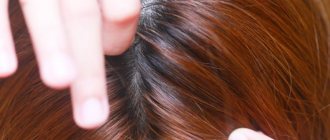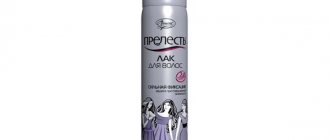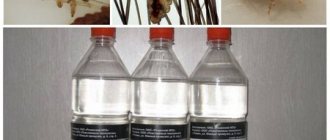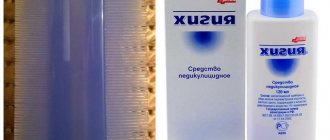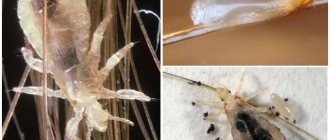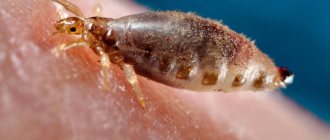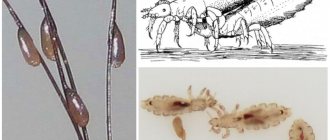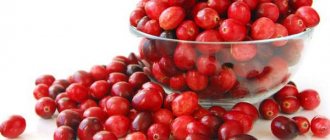Mechanical methods
The simplest and most effective folk methods of getting rid of lice and nits are shaving and combing the hair.
Combing
The first method allows you to immediately say goodbye to parasites, which will be removed from the head along with the hair. But the second is less radical, but will require a lot of time - you will have to comb your hair with a fine comb until absolutely all lice and nits are removed.
Lice in children. How to get rid of lice from a child
Today we will touch on a very sensitive topic (at least in our country). This is a disease that they don’t talk about with their friends, they don’t complain about it to their acquaintances (and what about it, they don’t even tell their doctors about it). The topic of this article is lice in children (pediculosis), or more precisely, how to get rid of lice in a child and prevent lice infection.
Do you think that if you regularly wash your hair and keep yourself clean, then you are not at risk of getting lice? This does not threaten you if you wear a short sporty haircut and stay at home. And if your child has thick, long hair, and he attends a child care institution (school or kindergarten), then you are constantly at risk of picking up head lice. What kind of parasite is this - a head louse?
Head lice are very small insects, approximately 0.5 mm. in width and 3 mm. in length, which live in human hair and scalp. They range from light to dark brown in color and sometimes appear red after feeding on blood.
Every animal has its own louse; moreover, every place covered with human hair has its own louse. So you won't get fleas from animals.
Head lice have claws on each of their six legs, which they use to cling to hair and move around. Head lice can only move from one head to another through close, prolonged head contact. Lice cannot jump, fly, or swim.
On the human head, the female louse lays fertilized eggs and glues them to the hair, near the roots, where the temperature is most suitable for their growth. Lice hatch after 7-8 days, and the shell remains on the hair. Then the lice feed intensively, grow, mature and give birth to offspring.
How to detect lice?
There is no way to prevent your children from getting head lice, but regular detection helps you find the infestation and eliminate it quickly. As mentioned earlier, lice don’t care whether the hair is dirty or clean, so no one is safe from infection, except perhaps those who have no hair.
The louse feeds on blood, and the bite site itches, but itching cannot always be called a symptom of infection. The best way to detect head lice is through “detective combing.” This should be done regularly (weekly), as well as when there is an increased risk of infection (for example, when a lice infestation is found at school, etc.).
If your child's hair is light, it will be easier to spot adult lice (they are dark brown) when looking at the scalp, but it will be more difficult to spot nits (they are transparent white). And if the child is dark-haired, then vice versa. Lice eggs (nits) can be confused with dandruff due to inexperience, but the difference is that they are firmly glued to the hair, while dandruff can be easily removed.
Probably not a single mother will admit that her child has lice, but will try to secretly remove lice at home.
How to get rid of lice from a child.
So, you have found lice on your child and you have no doubts. What to do next? The most correct, but also the most inconvenient decision for you is to see a doctor. You will be immediately quarantined and reported to school with all the ensuing consequences. Therefore, we will talk about how to get rid of lice at home.
Lice remedies are now sold in huge quantities in any pharmacy. How to treat lice? When choosing a product, you should be guided by the following:
The product must be appropriate for the age of the child. Most products contain poison (pesticides), but in different concentrations.
Try not to use sprays, because... Some of the product will definitely get into your respiratory tract, and if you suffer from asthma, then they are simply contraindicated for you.
It is better to use products that use the dehydration effect, because... Lice are becoming resistant to some pesticides, and resistance to the dehydration effect has not yet been identified.
Nits are not completely destroyed by lice repellents! They need to be combed out! Long, tedious, but what to do? Otherwise, new lice will appear from them within a week.
How to get rid of lice and nits.
Comb dry hair with a regular comb to free tangled hair.
Apply the product to your hair strictly according to the instructions.
Leave the product on your hair for the time specified in the instructions.
After this time, comb your hair with a fine comb (included with the product) to remove dead lice and their eggs.
Wash your hair with regular shampoo and treat your hair with a 2% solution of table vinegar. It destroys the glue that attaches the eggs to the hair and thus promotes better combing.
For several days, comb your hair daily and remove any remaining eggs. If you find live lice, it means either this remedy does not work or you have violated the instructions.
After 7-8 days, be sure to check the hair visually using “detective combing.” If you find live young lice, repeat all over again until they become adults and lay eggs.
Do you think that's all? Everything, but not quite. You can pick up lice again in the same place where you picked them up before. How to prevent this? Don't know…
Take care of yourself and your kids! Be careful and prudent!
Doctor Konon T.A.
Oils
Oils have been used to combat parasites for a very long time. They envelop the insect's body, blocking the respiratory tract and causing suffocation. Essential oils are excellent repellents. Some odors are unbearable for lice and force them to leave their homes.
Tea tree oil
Parasites cannot tolerate the aroma of tea tree, so this oil is often used to combat lice at home. When combined with alcohol or vodka, the result is a product that affects not only adult parasites, but also nits.
Lavender oil
Thanks to its pungent odor, lavender oil repels parasites. It is often used as an aid against lice and nits. In addition, the product has antiseptic and soothing properties.
Anise oil
Anise oil is a fairly popular folk remedy for lice. It is more often used for preventive purposes or as part of complex therapy. An additional benefit is that anise oil promotes healing and restoration of the skin.
Geranium, anise and lavender oil
A mixture of anise, geranium and lavender oils is a fairly effective recipe against lice. The properties of the oils complement each other, making the product more effective than each oil individually.
Burr oil
Folk remedies against lice and nits based on burdock have been known for a very long time. Warm burdock oil will not only help get rid of parasites, but also improve the condition of your hair and scalp.
Vegetable oil
It is unlikely that you will be able to remove lice using only vegetable (sunflower, flaxseed, olive) oil. But as part of a complex treatment, the product will have some effect, and in addition, it will soften the skin and improve the condition of the hair.
Coconut oil
Coconut oil has a negative effect on parasites, disrupting the breathing process. This oil is preferable to vegetable oil as it contains more nutrients for hair.
Coconut oil
Mayonnaise
Thanks to the acetic and citric acid, mustard and fats contained in mayonnaise, the product has a combined effect on lice, blocking the access of oxygen to adults and weakening nits.
Traditional medicine recipes
In addition to modern medications, many people still practice traditional methods of treatment. You can influence parasites with simple improvised means: vinegar, kerosene, hydrogen peroxide and others.
The main advantages of these components are: low price, ease of use. But there are also disadvantages:
- Most of these products have a strong, unpleasant odor.
- These components may cause a severe allergic reaction or chemical burn to the skin.
- Some substances are less effective than those drugs that are sold in pharmacies and have quality certificates.
Recipes with kerosene
Recipes for products containing kerosene have been known for a long time. But before using them, it is recommended to weigh the pros and cons, since this chemical is considered very aggressive towards the skin. In addition, kerosene can provoke the development of severe allergic reactions or cause chemical burns. To minimize the risk of side effects, it is recommended to purchase a lighting or technical fluid.
The simplest recipe for fighting lice using kerosene
- Mix 1 tbsp. a spoonful of kerosene with 1 teaspoon of shampoo and 2 teaspoons of olive oil.
- Apply the resulting mixture to your hair from roots to ends.
- Wrap your head in a plastic bag and towel.
- Leave the product for 2 hours for adults and 1 hour for children.
- Wash your hair with shampoo.
- Rinse the treated area with a weak vinegar solution.
- Carefully comb out the nits with a special comb.
It is recommended to repeat the procedure after 5 days. The course of treatment is 1 month.
This method cannot be used to treat head lice in children in the first two years of life.
Recipes with hydrogen peroxide
Hydrogen peroxide is not only a universal antiseptic, but is also used to combat parasites. Hydrogen peroxide contained in the drug is considered a powerful oxidizing agent. It is this substance that has a destructive effect on the shell of insects, penetrating inside.
Thus, the peroxide destroys the insides of the lice, killing them. Those individuals that remain alive can no longer lead a previously full life and lose the ability to reproduce. As for nits, their too dense shell is not destroyed by this substance, but the mucous secretion with which they are attached to the hair suffers.
Before using the product, it must be diluted with water in a ratio of 1:2 and act according to the step-by-step instructions:
- comb your hair well,
- treat each strand and scalp separately with the solution. It is recommended to apply the composition using a sponge,
- put a plastic cap or a simple bag on your head,
- Leave the product on for no more than 10 minutes. Longer exposure may cause burns on the scalp,
- rinse the peroxide from the hair with warm water and a vinegar solution (add 1 teaspoon of vinegar or citric acid to 1 liter of water),
- Dry your head slightly and comb your hair thoroughly with a comb.
If necessary, you can repeat the procedure, but not earlier than after a week and a half.
This method of exposure is contraindicated in the presence of wounds, abrasions and other damage to the skin, and is also not applicable to children under 5 years of age. If unpleasant symptoms appear during the procedure, you should interrupt the treatment and quickly wash off the peroxide from your head.
Important! Undiluted peroxide causes chemical burns, damages the hair structure and promotes hair loss.
Recipes with vinegar
When deciding to use vinegar as a remedy for lice, it is worth remembering that it does not have a detrimental effect on insects. Acetic acid only neutralizes the substance with which parasite eggs attach to the surface of the hair.
The disadvantages of this method include: the possibility of developing an allergic reaction, change in hair color, and the appearance of a chemical burn. This component is best used in complex action as a rinse aid. If parents are determined to use acetic acid, then its concentration should not exceed 9%.
Traditional method recipe
- dilute vinegar with warm water in a ratio of 1:2,
- moisten your hair with the resulting solution,
- cover your head with a plastic bag and a terry towel,
- leave the product for half an hour,
- after removing the towel, carefully comb out lice and nits,
- wash your hair with shampoo.
Repeat the treatment procedure after 2-3 days.
To remove lice, you can use vinegar with the addition of table salt. In 200 ml of 9% vinegar, previously diluted with water in a ratio of 1:3, add 1 tbsp. spoon of table salt, stir until completely dissolved. Apply the resulting solution to shampooed and slightly dried hair. Put a cellophane cap on your head. Leave the product for 40 minutes, then wash your hair and dry your hair.
Herbal remedies, decoctions and infusions
Decoctions and juices of some plants affect not only adult lice, but also lice eggs. Therefore, home treatment is often supplemented with products based on herbs, berries and fruits.
Lemon juice
Citric acid softens the shell of the eggs and corrodes the adhesive substance that attaches them to the hair. Therefore, lemon juice is used as part of a complex treatment to get rid of nits.
Cranberry
The principle of action is similar to lemon juice. Due to the acid contained in the berries, the protective capsule in which the larva develops is damaged, and the nit is more easily separated from the hair.
Sagebrush
Infusion of bitter wormwood is a proven folk remedy for lice. As soon as you apply the decoction to your hair for half an hour, the lice, sensing the smell, will rush to flight. This recipe is often supplemented with the main treatment.
Garlic juice
Lice do not like garlic as much as wormwood. The specific smell is unbearable for parasites, and garlic juice damages the chitinous cover of lice and the shell of nits. Removing parasites using this method is only possible if there are no open wounds or ulcers on the head.
Onion juice
The principle of action and the resulting effect are similar to the use of garlic. The main disadvantage of onion (and garlic) treatment is the persistent odor that remains on the hair for 4 to 6 days.
Mint with pomegranate juice
Pomegranate juice with fresh peppermint is an absolutely safe and quite effective homemade recipe for lice. The acid from pomegranate makes it easier to remove nits, and the smell of mint repels lice.
Black cumin
Black cumin crushed in a mortar and mixed with apple cider vinegar in equal parts is a complete cure for head lice, helping to get rid of both adult parasites and eggs.
Decoction of elecampane root
The decoction itself will not help get rid of lice, but if you treat your hair with it after a more powerful drug, the overall effect will increase.
Angelica root decoction
By rinsing your hair with a decoction of angelica root every two days, you can significantly reduce the number of parasites.
Burdock decoction
Burdock decoction is not very effective in fighting parasites, so it is more often used to treat the effects of lice and restore skin.
Burdock decoction
Decoction of pine needles
Pine decoction is not used as the main medicine for lice. But rinsing with it can significantly reduce the number of lice on the head. Absolute safety has made a decoction of pine needles one of the popular auxiliary folk remedies for head lice in children.
Decoction of hellebore and wild rosemary
Hellebore root and wild rosemary herb, taken in equal parts, are mixed with heated pork fat and infused. The resulting ointment allows you to get rid of not only lice, but also nits.
Mustard
A mixture of mustard with raw egg and vinegar eats away the sticky substance that holds nits on the hair and negatively affects adult lice.
Folk remedies
Humanity has been fighting lice for a long time. At home, all kinds of products with strong odors are used to repel insects and kill them. Some of the folk remedies are very effective.
Kerosene
The most effective folk remedy that really allows you to get rid of nits and adults in one use. This product should be used with extreme caution. It is toxic, can burn mucous membranes and skin, and ignite. Kerosene is diluted with oil in a ratio of 1:10 and applied to dry scalp, put on a plastic cap, wrap in a towel and leave for several hours or overnight. During this time, the lice die, the nits peel off from the hair and also die. After the procedure, you will have to wash your hair several times to wash out this “mask” and all the dead parasites. This method is very bad for the hair and scalp. Under no circumstances should you remove lice from children in this way.
Tar soap
For some reason it is considered a remedy against hair parasites, but in fact it has no effect on them. It is safe, dries the scalp irritated by bites, disinfects wounds, and can be used for medical purposes. It can act on lice only as a repellent, for preventive purposes.
Essential oils
Most often, tea tree oil is used to treat head lice, as well as lavender, rosemary, wild rosemary, wormwood, and mint. These oils are added to shampoo and hair masks. Due to their pungent odor, they repel insects. After all manipulations, you must comb your hair thoroughly. The disadvantage of this method is its low efficiency. It does not kill all parasites; you will have to carry out many procedures to get rid of them all. It is not possible to remove lice in one day and forever with the help of oils. But it’s worth adding essential oils to your hair care if a person works in an unfavorable environment – where the risk of getting lice is higher.
Vinegar
Vinegar rinses and wraps help remove nits from the base of the hair. Lice eggs cling very tightly to the hairs; it is very difficult to remove them even by carefully combing them with a fine comb. Vinegar breaks down the sticky substance, which will help get rid of nits faster. There is no point in using vinegar against adults and nymphs.
Hellebore
This is a herb that contains an alkaloid that is harmful to lice. A decoction or tincture is made from it. Hellebore water with the herb mashed in it is applied to the hair, left for a couple of hours, then the hair is thoroughly washed. Attention: you cannot use this method of removing lice and nits if there are wounds on the scalp. Especially in children, this causes allergic reactions and severe irritation.
Lemon, cranberry, pomegranate
These acidic foods kill insects and their eggs, but their effect is not very strong. You will have to carry out several procedures over a long period of time to get rid of lice.
Cosmetics and medical products
Folk recipes include not only natural herbal remedies, but also more radical drugs.
Tar soap
A safe folk remedy for lice is often used to treat children. Soap is used to get rid of lice in the early stages of infestation.
Hydrogen peroxide
An effective remedy for the treatment of pediculosis. The substance corrodes the chitinous cover of insects and the shells of nits. To avoid burns, peroxide is diluted with water.
Hair dye
Ammonia, which is part of many hair dyes, is harmful to parasites. But it is not advisable to use paint as the only medicine against lice and nits, since the result will be rather weak.
Hair fixation spray
The smell of hairspray will neutralize lice for a while, but it will not help get rid of nits. Yes, and it is impossible to remove lice with hairspray, but a shell of stuck together hair will be an excellent hiding place for parasites.
Alcohol or vodka
Alcohol causes parasites to suffocate, so it will help get rid of some lice. But the product is not very effective, and also has a number of contraindications. Therefore, using alcohol or vodka for lice and nits is not the best option.
Pharmacy products (chemical method)
Medicinal pharmaceutical chemicals and herbal preparations have an effective effect on blood-sucking parasites; they do not provide removal in one go, but with their help you can quickly get rid of lice and nits at home:
- Nit Free
is a safe plant-based product that has no contraindications, does not contain insecticides, is suitable for prevention, and is effective in combination with combing during treatment. - Nittifor
- cream, lotion, has a neurotoxic chemical effect on lice, kills them before combing out. - Para-plus
is an aerosol based on natural insecticides, the product kills lice with pesticides, and also, using the substance malathion, damages the shell of nits, making it easier to remove them from the hair. - Pedilin
is an organophosphorus toxic solution that destroys the nervous system of parasites, applied to the hair at the roots for a few minutes, washed off with a solution of vinegar or citric acid before combing. - Pediculen Ultra (pediculin)
is an anise-based alcohol product in the form of an aerosol, anise essential oil suffocates lice, and alcohol damages nits. - Nyx
is a cream with a low concentration of insecticides, affects the nerve cells of parasites, is rubbed into the roots of the hair and washed off before combing, has a long-lasting effect. - Rosh Tov
is a herbal remedy based on essential oils and pungent plant extracts, a combination of odors that suffocates lice and partially nits when applied repeatedly. - Nyuda
is a preparation based on liquid silicone - dimethicone, which has a physical effect on parasites by suffocation, and is very effective against nits - it envelops them in a thin, airtight film. - Reed
is an insecticidal shampoo that affects the nervous system of parasites, is suitable for the prevention of head lice when used once every 7-10 days, applied to the hair, washed off with soap or shampoo before combing.
Chemicals, despite the marketing gimmicks on the packaging and certification, in any case harm human health. Try not to resort to chemicals.
Household chemicals and acids
Household chemical products are a questionable choice for the treatment of head lice. If used incorrectly, these products can do more harm than good.
Vinegar
Vinegar corrodes the chitinous cover of insects and the shells of nits. To avoid burns, the substance is diluted with water and used for rinsing (makes it easier to get rid of nits on thick, long hair).
Vinegar
Kerosene
An effective lice remedy that must be used very carefully. For safety reasons, kerosene is mixed with vegetable oil in a ratio of 1:10.
Turpentine
Pure turpentine is a toxic substance, so to get rid of lice, use turpentine ointment, which can be purchased at a pharmacy.
Dichlorvos
Dichlorvos is an aggressive, highly toxic chemical. It is used to destroy parasites indoors, but it is absolutely impossible to fight lice in humans with its help.
Laundry soap
Laundry soap as part of complex therapy will speed up getting rid of lice, but not nits. In addition, laundry soap helps soothe itching and relieve inflammation.
Dust soap
Dust soap contains a powerful insecticide, so the product effectively gets rid of lice. But it has many disadvantages, the main ones of which are high toxicity and a strong unpleasant odor, so using dust soap to treat head lice is not recommended.
Advantages and disadvantages
Treatment of head lice with folk remedies has its advantages and disadvantages. Among the advantages:
- ease of use;
- availability of ingredients;
- low cost;
- large selection of options;
- relative safety when used correctly.
The disadvantages include:
- risk of an allergic reaction;
- low efficiency (especially in advanced cases);
- long period of treatment.
Long treatment period
In addition, the use of many products prepared according to folk recipes entails a deterioration in the condition of hair and skin.
What if the treatment didn't help?
Situations where treatment of lice and nits at home using traditional recipes is not effective enough occur quite often. In this case, you should not persist, continuing to use a useless remedy, or try other recipes from your grandmother’s arsenal.
The result will be an increase in the colony of parasites and rapid progression of the disease. To prevent this, you need to turn your attention to professional means. The best solution would be to consult a doctor who will prescribe the drug most suitable for a particular case.
How difficult is it to get rid of nits and why?
Lice eggs are attached to the hair very firmly .
Even with harsh treatment with a comb, it is not always possible to “tear them off,” not to mention such hard-to-reach places as behind the ears or at the temples, on the eyelashes.
However, the adhesive substance breaks down over time.
This will take from 3 to 6 days , but during this period the parasites are already emerging from the eggs.
What methods are there to combat nits ? How to get rid of nits at home quickly and effectively? How to kill nits at once?
With the help of insecticides, nits are killed, but remain in the curls until the adhesive mass dissolves. Although combing helps to get rid of the total mass of larvae, it is not 100% effective . Based on this, the fight against head lice eggs should be comprehensive .
It is quite possible to get rid of them in just 1 day , but preventive measures are applied over the next 3-4 days to prevent infection of others. This is how long lice can exist outside of humans. If after this time no new lice have appeared, we can safely say that lice have been eliminated .
Often people want to know how to quickly pick out nits from hair. The difficulty is that nits are not fruits; you can’t pick them that easily . To quickly remove nits from hair, you need to use comprehensive measures .


